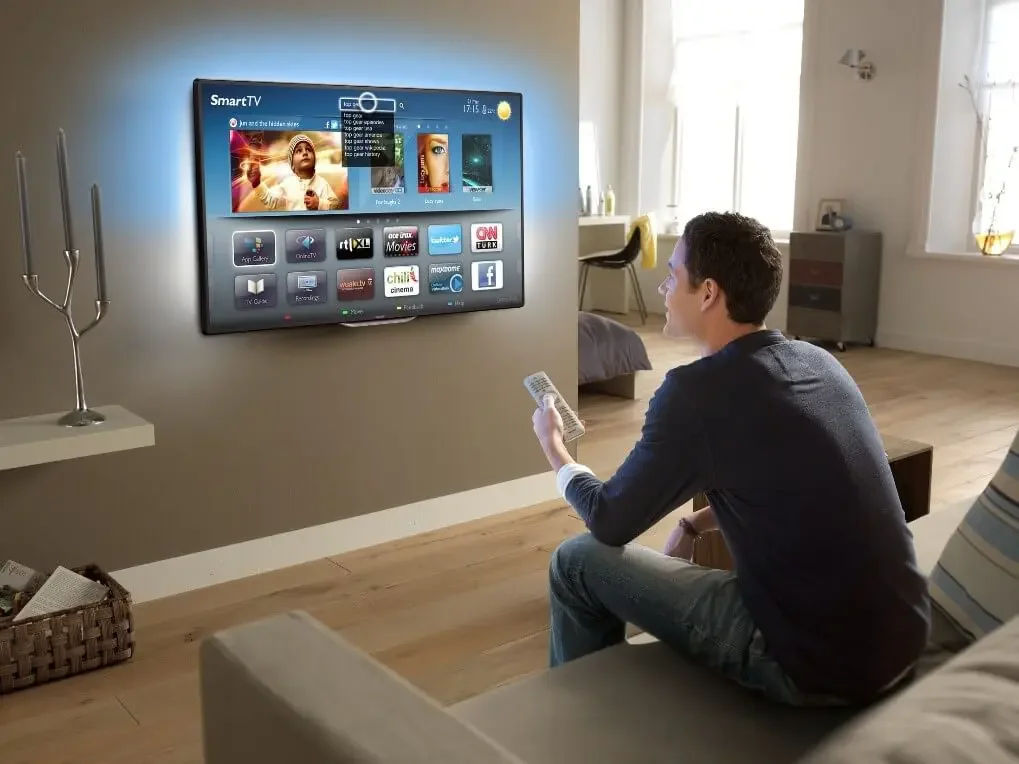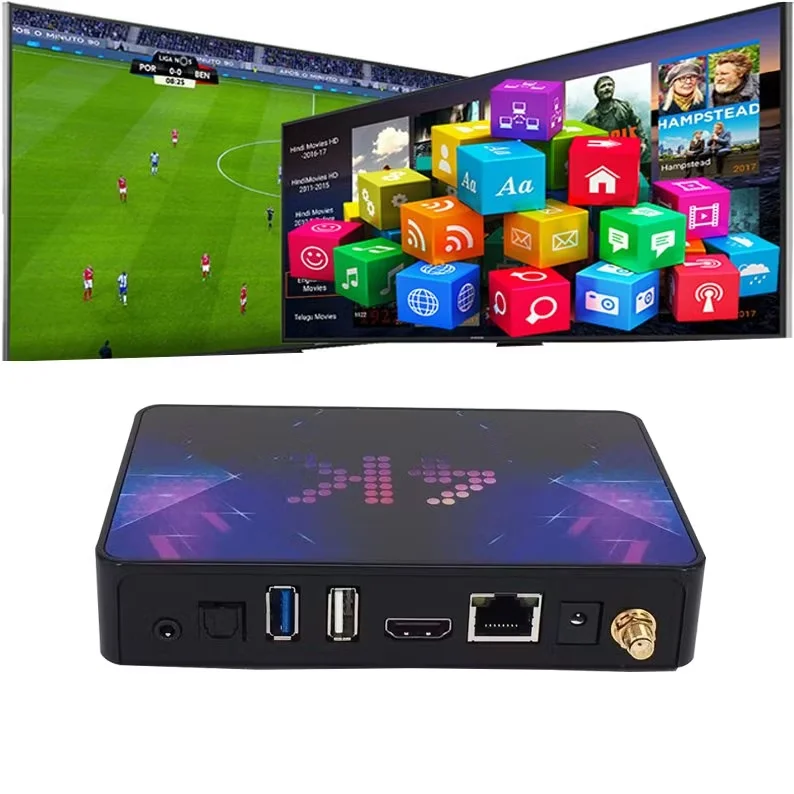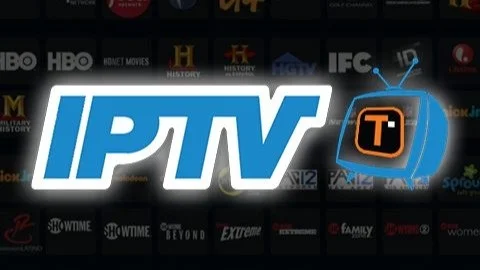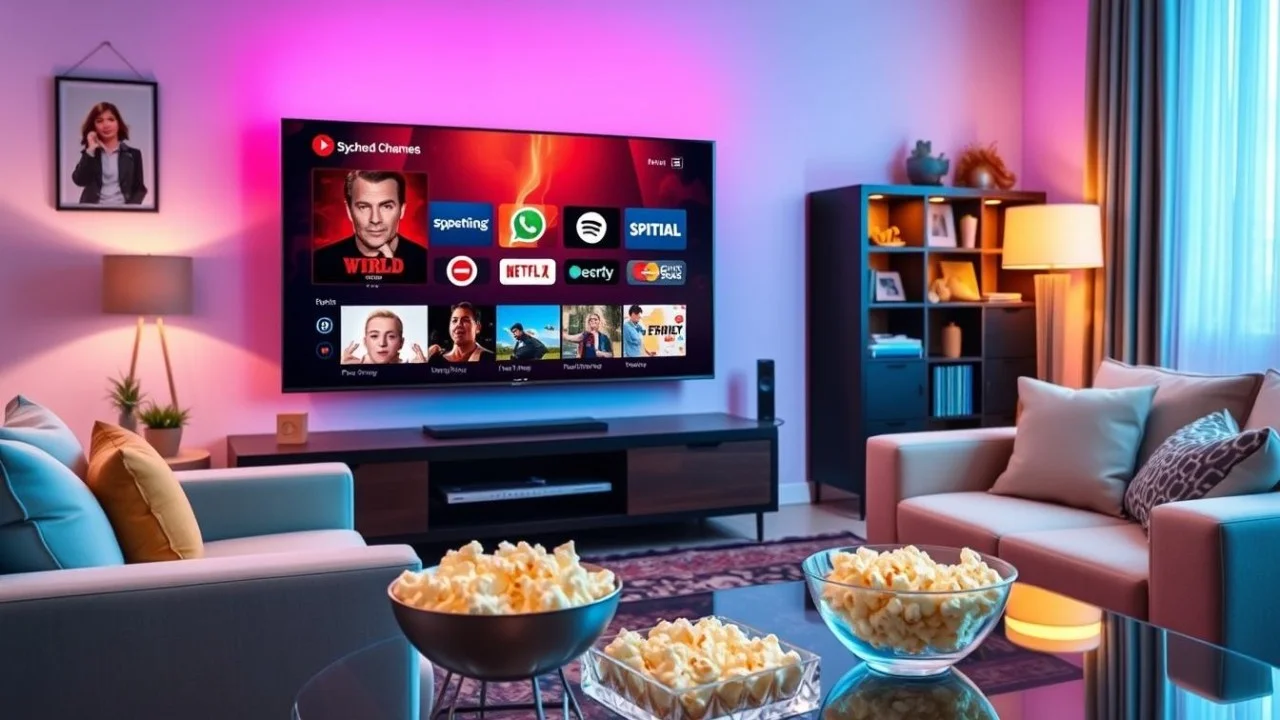What Exactly is IPTV Antenna Integration? Unpacking the Basics
Have you ever wondered if you could get the best of both worlds: the massive channel selection of IPTV and the reliability of local, over-the-air (OTA) broadcasts? That’s precisely where IPTV antenna integration comes into play. But what does this term actually mean? Simply put, it refers to combining an Internet Protocol Television (IPTV) service with a traditional broadcast television antenna within your home entertainment setup. Instead of choosing one or the other, you leverage both technologies simultaneously.
So, why would someone do this? IPTV services, like those offered by IPTV4Cheap, deliver television content over the internet. This opens up a universe of international channels, movies on demand, sports packages, and specialized content that you typically wouldn’t find through traditional cable or satellite. It’s flexible, often more affordable, and provides access to a staggering amount of media. However, IPTV relies entirely on your internet connection. What happens if your internet goes down? Or what if you want guaranteed access to your local news, weather, and public broadcasting channels without worrying about internet stability or potential streaming delays? That’s the antenna’s role.
A traditional TV antenna captures free OTA broadcast signals from local stations. These signals are uncompressed, often resulting in superior picture quality for those specific channels compared to compressed streams. Integrating an antenna ensures you always have a backup for essential local programming, regardless of your internet status. Think of it as a safety net. You get the vastness of IPTV and the stability of local broadcasts. How is this integration achieved? It usually involves using a tuner device or specific software that can manage inputs from both your IPTV stream (via the internet) and your antenna feed (via coaxial cable). Some modern smart TVs or dedicated set-top boxes might have features facilitating this, allowing you to switch seamlessly between an IPTV app like IPTV Smarters Pro and your antenna channels, sometimes even integrating them into a unified channel guide. It’s about creating a more robust and versatile viewing experience tailored to your needs.

Consider the different types of content each source provides. IPTV excels at delivering niche content, international channels, and extensive VOD libraries. An antenna focuses purely on local stations within its reception range. By combining them, you cover all bases. You can watch a blockbuster movie streamed via your IPTV subscription one moment, and then switch to the live local evening news captured by your antenna the next. This hybrid approach addresses potential weaknesses of relying solely on one method. Internet outage? You still have antenna channels. Want to watch a channel from another country? Your IPTV service has you covered. It offers resilience and choice, something increasingly valuable in today’s diverse media landscape. Finding affordable IPTV services makes this combination even more appealing from a cost perspective compared to traditional high-cost bundles.
Why Combine IPTV with a Traditional Antenna? Exploring the Benefits
Combining IPTV with a traditional antenna might seem like mixing old tech with new, but the benefits are surprisingly practical and enhance the viewing experience significantly. What are the main advantages driving people towards this setup? Perhaps the most compelling reason is reliability and redundancy. IPTV is fantastic, offering a vast selection of channels from around the globe, but it’s entirely dependent on a stable internet connection. If your internet service provider has an outage, or even if your home Wi-Fi is acting up, your IPTV stream goes down. Poof, no TV. An antenna, however, pulls free over-the-air (OTA) signals directly from local broadcast towers. It doesn’t need the internet. So, even if your web connection fails, you can still tune into local news, weather alerts, major network shows, and sports broadcasts via your antenna. It acts as a crucial backup.
Another major benefit is access to superior quality for local channels. Is OTA quality really better? Often, yes. Local broadcasters transmit uncompressed or minimally compressed high-definition signals. Many IPTV providers, to save bandwidth and ensure smooth streaming, apply more compression to their channels, including local ones they might carry. This can sometimes lead to a slightly softer picture or motion artifacts. For viewers who prioritize the absolute best picture quality for their local network affiliates (like ABC, NBC, CBS, FOX, PBS), the direct feed from an antenna is often visibly superior. You get the crispest possible image for those specific channels, complementing the wide variety available through your IPTV subscription plan.

Cost-effectiveness is also a factor. While you need to purchase an antenna (often a one-time cost) and potentially a tuner, the broadcasts themselves are free. Integrating these free local channels can sometimes allow you to opt for a cheaper IPTV package that might not include local stations or might charge extra for them. You are essentially supplementing your paid IPTV content with free, high-quality local content. This hybrid approach can lead to overall savings compared to comprehensive cable packages or premium IPTV tiers that bundle everything. Furthermore, it provides access to subchannels. Many local broadcasters transmit multiple digital subchannels over the same frequency – channels featuring classic TV shows, weather radars, local government programming, or niche content that might not be carried by your IPTV provider. An antenna unlocks all of this additional free content.
Finally, consider the breadth of content. You get the global reach and specialized programming of IPTV – think international sports, foreign news channels, extensive movie libraries – combined with the hyperlocal focus of OTA broadcasts. It’s a complete package. Want to watch a Premier League match unavailable locally? IPTV. Need the latest local emergency alert? Antenna. This comprehensive access is hard to beat. Check out IPTV guides to see the vast channel lists available through streaming, and then imagine adding your rock-solid local channels on top of that. It truly offers the best of both worlds for many users.
Understanding the Technology: How Does IPTV and Antenna Coexistence Work?
So, you’re sold on the benefits, but how does this integration actually function on a technical level? How do signals from the internet (IPTV) and signals from the airwaves (antenna) come together on your screen? It’s not quite as simple as just plugging both into your TV, although sometimes it can be close. The core idea is managing two distinct signal sources and providing a user-friendly way to switch between them or even combine their channel listings.
There are several ways this coexistence can be achieved. One common method involves using a Smart TV with built-in tuners and app support. Many modern Smart TVs have a coaxial input for an antenna and an Ethernet/Wi-Fi connection for the internet. The TV’s operating system can manage both. You can scan for OTA channels using the antenna input, and these channels get stored in the TV’s memory. Separately, you can install an IPTV player app, such as IPTV Smarters for Firestick (or the equivalent app for your TV’s OS), and log in with your IPTV account credentials. Switching between them might be as simple as changing the input source on your TV remote (e.g., from “Live TV/Antenna” to the HDMI port where your streaming device is connected, or directly launching the IPTV app from the TV’s home screen). While functional, this approach doesn’t always offer a truly *integrated* experience, as the channel lists remain separate.

A more integrated solution often involves using a dedicated tuner device or a powerful media player box. Devices like the HDHomeRun connect to your antenna and your home network. They tune the OTA channels and then stream them over your network. An app on your streaming device (like an Nvidia Shield, Fire TV, or Apple TV) or computer can then access both these networked OTA streams and your separate IPTV service streams. Some advanced media center software (like Plex with a Plex Pass, or specific IPTV player apps) can even combine the channel listings from both sources into a single, unified Electronic Program Guide (EPG). This means your local Channel 5 from the antenna can appear right alongside Channel 500 from your IPTV channel subscription in the same guide. This requires more setup but offers the most seamless user experience.
Another approach uses specific Android TV boxes or Enigma2 satellite receivers that have both antenna (DVB-T/T2/ATSC) tuners and robust IPTV capabilities built-in. These devices are designed from the ground up to handle multiple signal types. Their firmware often allows for scanning and storing antenna channels directly alongside IPTV playlists (like M3U lists provided by services such as Channels4Cheap). The EPG data can often be merged, providing that unified guide experience mentioned earlier. This requires a specific type of hardware but can be very effective. Regardless of the method, the key is having hardware and/or software capable of decoding both the internet-based IPTV streams and the radio-frequency OTA signals, and presenting them to the user in an accessible way. The complexity ranges from simple source switching on a TV to sophisticated network tuners and software merging everything into one interface.
Choosing the Right Antenna for Your IPTV Setup
Okay, you’ve decided to integrate an antenna with your IPTV service. Now comes a crucial question: which antenna should you buy? Choosing the wrong one can lead to frustration and poor reception, defeating the purpose of the integration. What factors should guide your decision? The most important factor is your distance and direction from local broadcast towers. Antennas are rated for specific mileage ranges (e.g., 30 miles, 50 miles, 70+ miles). You need an antenna powerful enough to reliably pick up signals from the towers transmitting the channels you want. Websites like TVFool.com or the FCC’s DTV reception map tool (in the US) can help you determine where the towers are relative to your home and how strong the signals are likely to be. This information is vital.
Next, consider the type of antenna: indoor vs. outdoor. Indoor antennas are convenient – easier to install, often cheaper, and aesthetically less obtrusive. They sit near your TV or stick to a window. However, they generally have a shorter range and are more susceptible to interference from building materials (walls, insulation, metal roofs) and electronic devices. They work best if you live relatively close (say, within 20-30 miles) to the broadcast towers and have minimal obstructions. Outdoor antennas, mounted on the roof, mast, or side of the house, offer significantly better range and performance. They get a clearer line of sight to the towers, bypassing many sources of indoor interference. If you live far from towers or in an area with challenging terrain (hills, dense trees), an outdoor antenna is almost always the better choice, despite the more involved installation. Some people also explore attic installations as a compromise, offering better reception than indoor antennas while keeping the unit out of the weather.

You also need to think about directionality: omnidirectional vs. directional. Omnidirectional antennas receive signals from all directions. This is useful if broadcast towers are located in different directions from your home. However, they can be more susceptible to picking up noise and interference. Directional antennas (like Yagi antennas) focus their reception in one specific direction. They offer higher gain (better signal strength) for signals coming from that direction and are better at rejecting interference from other directions. If all your desired stations broadcast from a single general direction, a directional antenna pointed correctly will likely provide the best, most stable reception. Again, the reception map tools mentioned earlier will help determine if your towers are clustered or spread out.
Finally, consider VHF vs. UHF capabilities. Broadcast television uses two main frequency bands: Very High Frequency (VHF) and Ultra High Frequency (UHF). While most digital broadcasts today are on UHF, some major network affiliates still use VHF frequencies (especially channels 2-13). It’s crucial to choose an antenna designed to receive both VHF and UHF signals if channels you want are broadcast on both bands in your area. Some cheaper or smaller antennas are UHF-only and might miss out on important VHF channels. Always check the antenna’s specifications. Don’t just go for the cheapest option; ensure it meets the technical requirements for your specific location and desired channels to effectively complement your IPTV service.
Step-by-Step Guide: Setting Up Your IPTV Antenna Integration
Ready to bring your IPTV and antenna signals together? The exact steps can vary depending on your specific equipment (TV, streaming box, tuner), but here’s a general guide to get you started. What’s the first step? Physical Antenna Installation and Connection. If using an outdoor antenna, mount it securely on your roof, mast, or attic, pointing it towards the broadcast towers if it’s directional. Run a coaxial cable from the antenna down to the location of your TV or tuner device. For indoor antennas, place it in the optimal location (often near a window or higher up) and connect the coaxial cable. Connect the other end of the coaxial cable to the ‘Antenna In’ or ‘RF In’ port on your TV, network tuner (like HDHomeRun), or compatible set-top box.
Next up: Scanning for Over-the-Air (OTA) Channels. Once the antenna is connected, you need to tell your device to find the available channels. How do you do that? Access your TV’s settings menu or the setup interface for your tuner device. Look for options like ‘Channel Scan,’ ‘Autotune,’ ‘Broadcast Setup,’ or ‘Live TV Setup.’ Ensure the input source is set to ‘Antenna’ or ‘Air’ (not ‘Cable’). Initiate the scan. This process can take several minutes as the tuner searches all available frequencies for broadcast signals. Once complete, it should display a list of channels found. You should now be able to select and watch these local channels directly through your TV or tuner’s interface.

Now, let’s integrate the IPTV side. Setting up your IPTV Service. This usually involves installing an IPTV player application on your Smart TV, streaming device (like a Firestick using Smarters), or computer. Popular apps include IPTV Smarters Pro, TiviMate, Perfect Player, or provider-specific apps. You’ll need the login credentials provided by your IPTV provider – typically a username/password or an M3U playlist URL and EPG URL. Follow the app’s instructions; a good starting point is often a setup guide provided by the IPTV service or app developer. Enter your credentials carefully. Once logged in, the app should load the channel list and Electronic Program Guide (EPG) for your IPTV subscription.
The final phase is Integration and Access. How do you switch between or combine the sources? If using just your Smart TV, switching might involve using the ‘Input’ or ‘Source’ button on your remote to toggle between ‘Live TV’ (antenna) and the HDMI input for your streaming device, or by launching the IPTV app directly. If using a network tuner (like HDHomeRun) and compatible software (like Plex, Channels DVR, or certain IPTV apps), you might need to configure the software to recognize both the network tuner feed and your IPTV source. This often allows for merging the channel lists into a unified guide, providing the most seamless experience. For devices with built-in tuners and IPTV support, the device’s main interface might already combine these sources after you’ve set up both. Explore the settings of your specific app or device to see if channel list merging or unified EPG options are available. Remember to check IPTV prices and plans to ensure you have the right subscription for your needs before starting the setup.
Troubleshooting Common Issues in IPTV and Antenna Setups
Even with careful setup, you might encounter some bumps along the road when integrating IPTV and an antenna. What are some common problems and how can you fix them? One frequent issue is Poor OTA Antenna Reception. You’ve scanned for channels, but some are missing, pixelated, or drop out frequently. What could be wrong? First, check your antenna placement and orientation. If it’s directional, ensure it’s pointed correctly towards the towers. Try repositioning an indoor antenna – even moving it a few feet can make a difference. Obstructions like buildings, hills, or even heavy foliage can block signals. An amplifier (signal booster) might help if the signal is weak but clean, but it can worsen things if the signal is noisy. Ensure your coaxial cable and connectors are in good condition; damage or loose connections severely impact signal quality. Sometimes, rescanning for channels periodically is necessary, especially if broadcasters change frequencies.
Another common headache involves IPTV Buffering or Freezing. Your antenna channels work fine, but your IPTV streams constantly pause or stutter. What’s the likely culprit here? This almost always points to an issue with your internet connection or home network. Run an internet speed test – do you have sufficient bandwidth for stable streaming (usually at least 15-25 Mbps per stream is recommended)? Is your Wi-Fi signal strong and stable where your streaming device is located? Interference from other devices or neighbors’ networks can degrade Wi-Fi performance. Consider using a wired Ethernet connection directly to your streaming device if possible; it’s almost always more reliable than Wi-Fi. Sometimes, the issue might be on the provider’s end (server overload), especially during peak viewing times. Trying a different server location, if offered by your cheap IPTV service, might help. Also, ensure your IPTV app, like IPTV Smarters APK, is up to date.

What about issues with the Electronic Program Guide (EPG)? Maybe the guide data is missing, incorrect, or not loading for either OTA or IPTV channels. For OTA channels, the EPG data (known as PSIP) is broadcast along with the channel signal. If reception is poor, the EPG data might be incomplete. Rescanning might help. Some tuner devices or software allow you to supplement OTA EPG data using online sources like Schedules Direct (often requires a subscription). For IPTV EPG issues, double-check the EPG URL provided by your provider is entered correctly in your app settings. EPG data can sometimes be slow to load, especially the first time. Ensure your device has enough storage space, as EPG data can consume considerable memory. If problems persist, contact your IPTV customer service for assistance or try refreshing/reloading the EPG data within the app.
Finally, you might experience Audio/Video Sync Problems. The audio might be ahead or behind the video on certain channels (either OTA or IPTV). This can be frustrating. Check if the issue is specific to one channel or affects all channels from that source. If it’s just one channel, it might be a temporary broadcast or stream issue. If it affects multiple channels, check the audio settings on your TV, streaming device, and within the IPTV app. Look for any audio delay or lip-sync correction settings and try adjusting them. Ensure your device’s firmware and the IPTV app software are updated, as fixes for sync issues are often included in updates. Sometimes, simply restarting the streaming device or TV can resolve temporary sync glitches. For persistent issues, experimenting with different audio output formats (e.g., PCM vs. Bitstream) might also help.
Maximizing Your Viewing Experience: Tips and Tricks for Integrated Systems
You’ve successfully set up your IPTV antenna integration. Now, how can you optimize it to get the absolute best viewing experience? It’s not just about making it work; it’s about making it work *well* for you. One key tip is to Invest in Quality Hardware. While it’s tempting to go for the cheapest IPTV box or the most basic antenna, your hardware forms the foundation of your experience. A good quality, appropriately ranged antenna ensures stable OTA reception. A powerful streaming device (like an Nvidia Shield, newer Fire TV Cube, or Apple TV 4K) with sufficient processing power and RAM will handle IPTV streams and potentially demanding apps much more smoothly than underpowered devices. This reduces buffering, speeds up navigation, and improves overall responsiveness. Don’t forget a reliable router if you’re using Wi-Fi, preferably one supporting modern standards like Wi-Fi 6 for better performance in crowded network environments.
Another crucial aspect is Optimizing Your Network for Streaming. Since IPTV relies heavily on your internet connection, ensuring your home network is up to snuff is vital. As mentioned before, use a wired Ethernet connection whenever possible for your primary streaming device. If Wi-Fi is unavoidable, ensure the device gets a strong signal. Consider using a mesh Wi-Fi system for better coverage throughout your home. Within your router settings, you might explore Quality of Service (QoS) features. QoS allows you to prioritize network traffic for specific devices or applications (like your IPTV box or streaming apps). This tells your router to give streaming traffic precedence over less time-sensitive activities like background downloads, potentially reducing buffering during peak usage times in your household.

Take advantage of Advanced App Features and Customization. Many modern IPTV player apps, such as IPTV Smarters Pro or TiviMate, offer a wealth of customization options. Spend some time exploring the settings. You can often customize the channel list appearance, group channels into favorites, hide unwanted categories, and adjust buffer settings. If your app supports integrating OTA channels (via a network tuner), learn how to merge the channel lists and manage EPG data for a unified guide. Setting up favorite channel lists combining key OTA stations and your most-watched IPTV channels can make navigation much quicker and more intuitive. Some apps also support multiple playlists or profiles, useful if you have multi-connection IPTV access for different family members.
Don’t overlook Regular Maintenance and Updates. Technology evolves, and keeping things current is important. Periodically rescan for OTA channels, as broadcasters might add new subchannels or change frequencies. Keep your streaming device’s operating system, your IPTV player app, and any related software (like Plex Media Server if you’re using it) updated to the latest versions. Updates often include performance improvements, bug fixes (like those pesky A/V sync issues), and security patches. Also, check your physical connections occasionally – ensure the coaxial cable from the antenna is secure and undamaged. Regularly restarting your modem, router, and streaming device (perhaps once a week) can also help clear temporary glitches and keep things running smoothly. Choosing a reliable provider like IPTV4Cheap ensures consistent service updates and support.
The Future of Home Entertainment: Is IPTV Antenna Integration the Way Forward?
As we look at the evolving landscape of how we consume television, the question arises: is this hybrid approach of combining IPTV and traditional antennas just a niche solution, or does it represent a significant trend for the future of home entertainment? What does the future hold? Several factors suggest that this integrated model has strong potential and relevance moving forward. Firstly, the desire for choice and flexibility is paramount for modern consumers. People are increasingly moving away from rigid, expensive traditional cable and satellite bundles. IPTV offers unparalleled choice in terms of international content, specialized channels, and on-demand libraries, often at a lower IPTV price. However, the reliability and hyper-local nature of free OTA broadcasts remain highly valuable, especially for news, weather, and major live events. Integrating the two caters directly to this desire for comprehensive access without being locked into a single delivery system.
Secondly, the importance of local broadcasting isn’t diminishing. While streaming services dominate headlines, local stations provide essential community information, news coverage, and access to major network programming that many viewers rely on. Cord-cutters who ditch cable often realize they miss these local connections. Antenna integration provides a free, high-quality way to retain access to these vital local channels while still enjoying the vast world of content offered by affordable IPTV subscriptions. As broadcasters continue to improve OTA standards (like ATSC 3.0 / NextGen TV, which allows for 4K broadcasts, better reception, and interactive features over the air), the value proposition of antenna use only increases.

Technology is also making integration easier and more seamless. What advancements are helping? Smart TVs are becoming more powerful, with faster processors and more sophisticated operating systems capable of handling both broadcast tuners and streaming apps more elegantly. Dedicated streaming devices are incorporating features friendlier to antenna users. Network tuners and media server software are continually improving their ability to merge different sources into unified interfaces. Apps like Smarters IPTV APK are becoming more robust. As the setup process becomes less technical and the user experience more polished, the appeal of integration broadens beyond tech enthusiasts to the average consumer looking for a better, more resilient way to watch TV.
Furthermore, internet infrastructure, while improving globally, is not yet universally perfect. Issues like data caps, throttling, peak-hour congestion, and unexpected outages still affect IPTV reliability for some users. Having an antenna provides a crucial fallback that doesn’t consume internet bandwidth. This resilience is a significant advantage. While pure IPTV solutions will undoubtedly continue to grow, especially in areas with excellent internet, the hybrid IPTV-antenna model offers a compelling balance of vast content choice, local access, potential cost savings, and enhanced reliability. It represents a pragmatic, powerful, and increasingly user-friendly approach that acknowledges the strengths of both internet-based delivery and traditional broadcasting, making it a strong contender for the preferred home entertainment setup for many viewers in the years to come. Exploring options like a 1-year IPTV subscription combined with a one-time antenna purchase can be a very cost-effective long-term strategy.